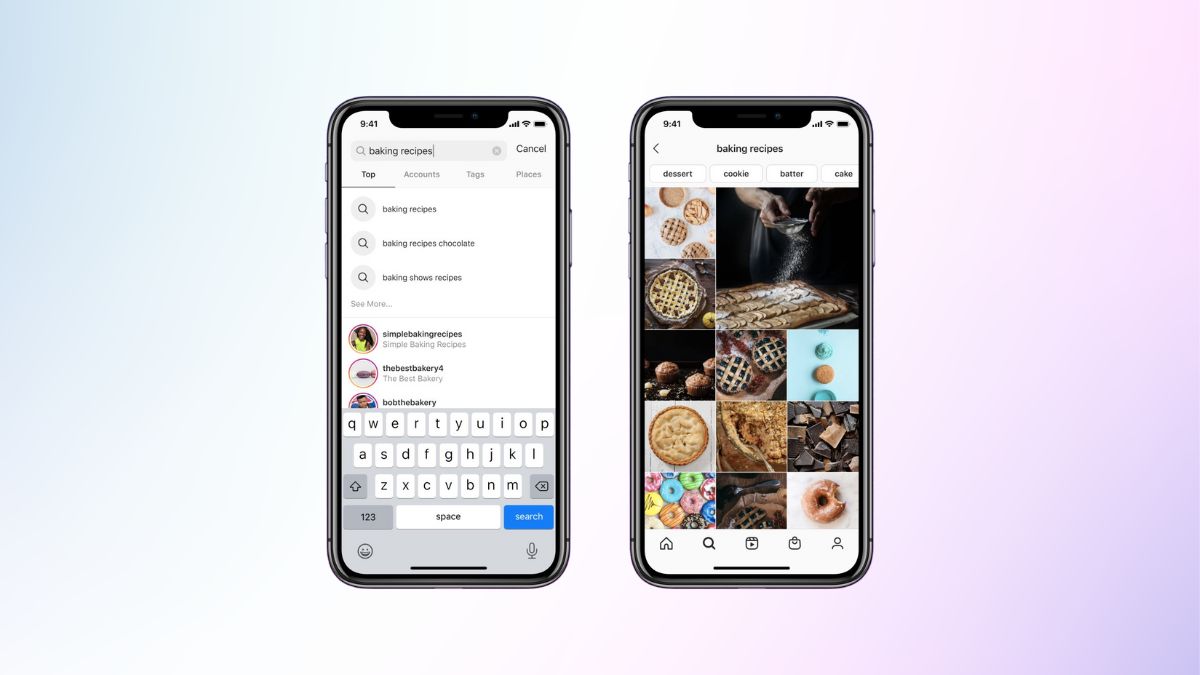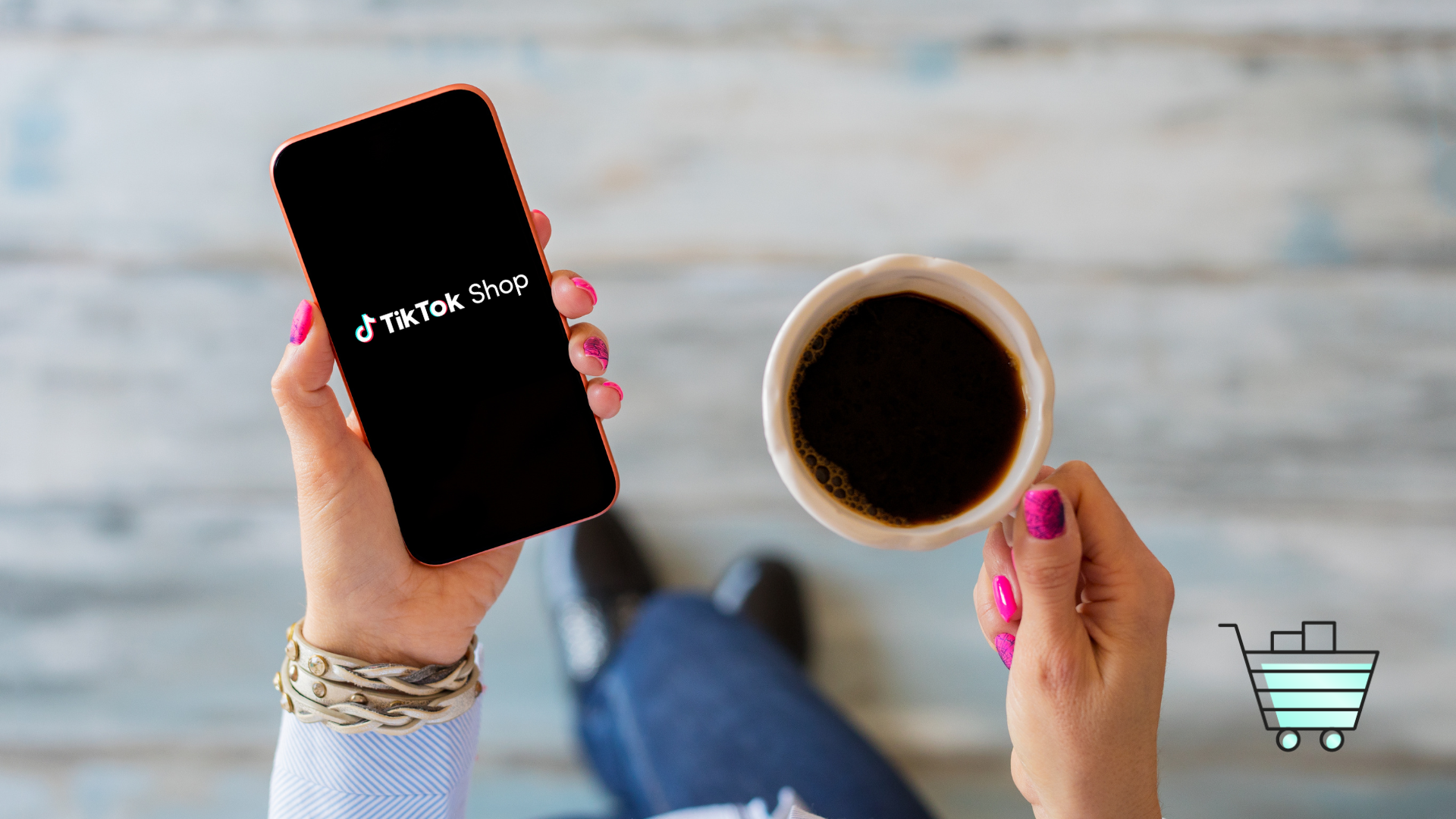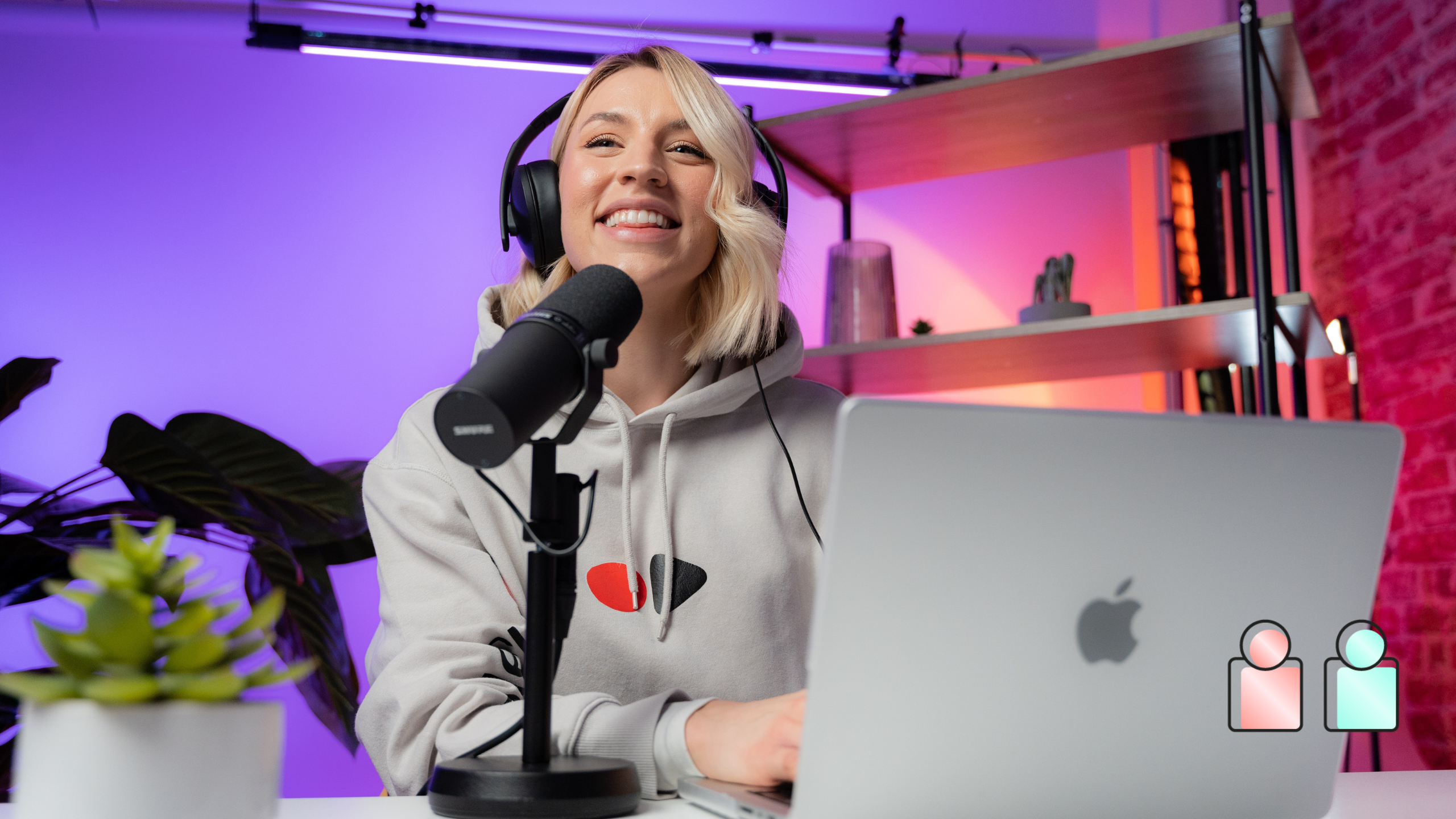Table of Contents
The impact of your influencer marketing campaign depends on the quality of your influencers. Influencers come in all shapes and sizes and are scattered across the web. It’s tempting to simply blast any influencer account you can get your hands on. Don’t do it. There’s no better waste of time than contacting influencers that are either not relevant nor actually influential. Good influencers are extremely picky about the things they promote. Good marketers should also be picky about the influencers that promote them. Over 200 million people consider themselves content creators. So learning how to pick influencers is quite key. Imagine wasting thousands of dollars on an influencer marketing campaign that reaches the wrong audience. Frustrating, right? Grab a cup of coffee and let’s learn how to avoid that.
How to Pick Influencers for a Marketing Campaign
Step 1: Define Your Goals
Determine what you want to achieve with your campaign. Is it brand awareness, engagement, or conversions?
Brand Awareness
Brand awareness focuses on increasing the visibility of your brand among your target audience. The goal is to make potential customers aware of your brand, its values, products, or services, especially during the early stages of the marketing funnel.
Key Metrics:
- Impressions: The number of times your content is displayed, regardless of clicks or interaction.
- Reach: The total number of unique users who see your content.
- Brand Recall: How well a consumer can recall or recognize the brand at a later date, often measured through surveys or interviews.
Engagement
Engagement measures how actively involved your audience is with your content, which can include likes, comments, shares, and other interactions that go beyond mere awareness. This is crucial for building relationships and fostering loyalty with your audience.
Key Metrics:
- Likes, Comments, Shares: Direct interactions on social media posts.
- Time Spent on Page: Indicates interest level and engagement on website content.
- Video Views and Interaction Rates: How many people watch your videos and engage with interactive elements.
Conversions
Conversions focus on turning interested audiences into paying customers or getting them to perform a specific action such as signing up for a newsletter, downloading a resource, or making a purchase. It’s about driving tangible actions that contribute directly to your business goals.
Key Metrics:
- Conversion Rate: The percentage of visitors who complete a desired action.
- Cost per Conversion: The cost of acquiring a conversion through advertising or other marketing tactics.
- ROI: Return on investment from specific conversion-focused campaigns.
Differentiating in Practice
In practical terms, these elements often overlap and are part of a cohesive marketing strategy, but they are distinct in their specific focus and the tactics used to achieve them:
- Brand Awareness is broad and about making sure your brand is seen and remembered.
- Engagement deepens the relationship between the brand and its audience, fostering a sense of community and interaction.
- Conversions are the ultimate goal of turning interest and engagement into measurable actions that have a direct impact on revenue or other business objectives.
Understanding and measuring each correctly helps tailor your marketing efforts to be more effective at reaching your overall business goals. Side note, it’s also good to understand how the algorithms work as well. If you need a quick refresher, click here to learn more.
Step 2: Identify Relevant Influencers
Knowing how to pick influencers is equal parts science and art. The beauty of the digital world is that practically everything can be tracked, yielding mountains of data for you to design smarter, more powerful campaigns. Influencer marketing is no exception.
Create a List of Potential Influencers Who Align with Your Brand Values and Target Audience
To find relevant influencers, you can utilize the internal features of Instagram, TikTok, and YouTube. Here’s how you can do it on each platform:

- Explore Page: Use the Explore page to find trending content in your niche. Instagram’s algorithm shows you content similar to what you’ve interacted with, so engage with posts relevant to your industry.
- Hashtags: Search for industry-specific hashtags. For example, if you’re in the fitness industry, look for hashtags like #Fitness, #Workout, or #Health. Check the posts under these hashtags to find potential influencers.
- Competitor Analysis: Look at the influencers your competitors are working with. Visit their profiles and assess their engagement and relevance to your brand.
- Follower Suggestions: Instagram often suggests accounts to follow based on your current following. Check these suggestions for potential influencers.
- Instagram Stories: Watch Stories of influencers in your industry. They often share their daily activities, collaborations, and endorsements, giving you insights into their brand alignment.
- Learn More: How To Advertise On Instagram Effectively
TikTok
- Discover Page: Use the Discover page to find trending videos and creators in your niche. The Discover page is tailored to show content that matches your interests based on your activity.
- Hashtag Challenges: Participate in or search for popular hashtag challenges related to your industry. This can help you identify creators who are active and influential in your niche.
- For You Page (FYP): Scroll through your FYP to find content that resonates with your brand. TikTok’s algorithm curates videos based on your engagement, making it a valuable tool for finding relevant influencers.
- Sounds: Check popular sounds that are trending in your industry. Often, specific sounds are used by creators within a niche, making it easier to find relevant influencers.
- Competitor Profiles: Visit competitor profiles and see which creators they are engaging with or have tagged in their content. This can provide leads on potential influencers.
- Learn More: How To Get On TikTok’s For You Page
YouTube
- Search Function: Use YouTube’s search bar to find videos and channels related to your industry. Use keywords specific to your niche to discover potential influencers.
- Trending Page: Explore the Trending page to see popular videos and channels. This can give you insights into what’s currently popular in your industry and who is driving those trends.
- Suggested Videos: Watch videos related to your industry and check the suggested videos on the sidebar. These suggestions are based on YouTube’s algorithm and can lead you to influencers with similar content.
- Comments Section: Engage with the comments section of popular videos in your niche. Influencers often engage with their audience here, providing a way to discover new creators.
- Channel Collaborations: Look for collaborations between influencers in your industry. This not only helps identify influencers but also shows their networking strength and reach.
- Learn More: About YouTube from NeoReach
Step 3: Measure Reach, Relevance, and Influence
There are three main variables that will help you pick influencers for your influencer marketing campaign:
- Reach: Measures how many people will see a given post by the influencer
- Relevance: Measures how related the influencer is to your industry, your brand, and your target audience.
- Influence: Measures the strength of the relationship between the influencer and her network.
Each of these variables is composed of several metrics, which we will explore below:
Reach
At its most basic level, reach can be calculated by adding up the influencer’s total number of followers across social networks. However, there are a few alternatives and refinements to make this calculation more precise.
- Impressions: A more accurate measure of reach can be arrived at by measuring the average number of impressions an influencer gets on each of her social accounts.
- Unique follower count: Some influencers have the same followers following them on each of their social media platforms. For instance, a person following the influencer on Instagram, TikTok, and YouTube would count as three separate followers for total follower count. For unique follower count, they would only register as one.
- Second-layer reach: An influencer may only have 20,000 followers, but if her content is regularly shared by someone with 100,000 followers, that has a significant impact on her reach. Second-layer reach accounts for the reach of the followers that regularly share the influencer’s content.
Relevance
Relevance tells you how much of a good fit the influencer is to your brand. Here are some metrics to help you measure relevance:
- Target Demographic: What is the age distribution of the influencer’s followers? What is the gender distribution? Where are they located? Would her followers be interested in your brand?
- Topics & Interests: What topics does the influencer discuss? Which topics resonate the most with her followers? How do these topics weave together with your brand?
- Personal Brand: What kind of language does she use? What clothes does she wear? What activities does she do? What music does she listen to? How do these connect with your branding?
- Their Influencer Network: Who does this influencer collaborate with? How do those influencers measure in your relevance test?
- Their Past Brand Partnerships: What brands has the influencer worked with in the past? Do these brands match yours?
Influence
As marketing influencer Jay Baer says, “true influence drives action, not just awareness”. The influence variable will help you measure how likely the influencer is to actually sway her followers to buy into your brand. To measure influence, you can use the following metrics:
- Engagement Rate: An engagement does not equal a sale, but it’s one step closer to the bottom of the funnel.
- Growth Rates: How fast an influencer’s follower count and engagement is growing is an indicator of how seriously the influencer’s followers will consider her opinion about your brand. The faster the growth, the more attention given to the influencer, and the more seriously she will be taken.
- Comment Sentiment: Are they mostly positive or negative? It’s not rocket science to know that people are more likely to take advice from someone they love rather than hate. That being said, the top personalities often simultaneously have the most loyal fans and the most vicious haters, so measure the median, not the average.
- Clicks & Conversions: Some social networks, namely X/Twitter, Facebook, and blogs, enable marketers to track visits using links and sales using a conversion tracking pixel. You can also monitor conversions with coupon codes or correlation analysis.
Reach, Relevance, and Influence will help you pick influencers for your brand or campaign. The importance you give to each variable will depend on your specific needs. For instance, a niche enterprise software product should weigh relevance more than a consumer brand with mass-appeal. An e-commerce company aiming for online sales might prioritize influence, specifically conversions, while a media company aiming for brand impressions might prefer reach.
Influencer Selection Checklist
Use this checklist to ensure you pick the right influencers for your marketing campaign:
-
Define Campaign Goals
- Identify the primary objectives (e.g., brand awareness, engagement, conversions).
- Determine key performance indicators (KPIs) to measure success.
-
Identify Relevant Influencers
- Create a list of potential influencers who align with your brand values and target audience.
- Use internal features on Instagram, TikTok, and YouTube to find relevant influencers:
-
Instagram:
- Explore Page: Use the Explore page to find trending content in your niche. Instagram’s algorithm shows you content similar to what you’ve interacted with, so engage with posts relevant to your industry.
- Hashtags: Search for industry-specific hashtags. For example, if you’re in the fitness industry, look for hashtags like #Fitness, #Workout, or #Health. Check the posts under these hashtags to find potential influencers.
- Competitor Analysis: Look at the influencers your competitors are working with. Visit their profiles and assess their engagement and relevance to your brand.
- Follower Suggestions: Instagram often suggests accounts to follow based on your current following. Check these suggestions for potential influencers.
- Instagram Stories: Watch Stories of influencers in your industry. They often share their daily activities, collaborations, and endorsements, giving you insights into their brand alignment.
-
TikTok:
- Discover Page: Use the Discover page to find trending videos and creators in your niche. The Discover page is tailored to show content that matches your interests based on your activity.
- Hashtag Challenges: Participate in or search for popular hashtag challenges related to your industry. This can help you identify creators who are active and influential in your niche.
- For You Page (FYP): Scroll through your FYP to find content that resonates with your brand. TikTok’s algorithm curates videos based on your engagement, making it a valuable tool for finding relevant influencers.
- Sounds: Check popular sounds that are trending in your industry. Often, specific sounds are used by creators within a niche, making it easier to find relevant influencers.
- Competitor Profiles: Visit competitor profiles and see which creators they are engaging with or have tagged in their content. This can provide leads on potential influencers.
-
YouTube:
- Search Function: Use YouTube’s search bar to find videos and channels related to your industry. Use keywords specific to your niche to discover potential influencers.
- Trending Page: Explore the Trending page to see popular videos and channels. This can give you insights into what’s currently popular in your industry and who is driving those trends.
- Suggested Videos: Watch videos related to your industry and check the suggested videos on the sidebar. These suggestions are based on YouTube’s algorithm and can lead you to influencers with similar content.
- Comments Section: Engage with the comments section of popular videos in your niche. Influencers often engage with their audience here, providing a way to discover new creators.
- Channel Collaborations: Look for collaborations between influencers in your industry. This not only helps identify influencers but also shows their networking strength and reach.
-
-
Evaluate Reach
- Calculate the total follower count across all social media platforms.
- Measure average impressions per post.
- Determine unique follower count to avoid overlap.
- Assess second-layer reach (influence of followers who share the content).
-
Assess Relevance
- Analyze the age, gender, and location of the influencer’s followers to ensure they match your target audience.
- Review the main topics the influencer covers and check if these align with your brand and campaign message.
- Evaluate the influencer’s style, language, and activities to ensure their personal brand complements your brand identity.
- Identify collaborations with other influencers and assess their relevance and influence.
- Review brands the influencer has previously worked with to ensure they align with your brand’s image.
-
Measure Influence
- Calculate the average engagement rate (likes, comments, shares) and compare with industry benchmarks.
- Track the influencer’s follower and engagement growth over time, preferring influencers with consistent or rapidly growing metrics.
- Analyze the sentiment of comments on the influencer’s posts, focusing on those with predominantly positive feedback.
- Use tracking tools to monitor clicks and conversions from past campaigns, evaluating the effectiveness in driving traffic and sales.
-
Review Content Quality
- Check the quality and consistency of the influencer’s content (photos, videos, blogs) to ensure it aligns with your brand’s aesthetic and standards.
-
Verify Authenticity
- Conduct a background check for any fake followers or engagement using tools like SocialBlade or IG Audit.
-
Engage with Potential Influencers
- Follow and engage with the influencer’s content before reaching out.
- Build a relationship by liking, commenting, and sharing their posts.
-
Initiate Contact
- Craft a personalized and professional pitch highlighting why the influencer is a perfect fit for your campaign.
- Outline campaign goals, expectations, and compensation.
-
Negotiate and Finalize Agreement
- Discuss and agree on deliverables, timelines, and payment.
- Ensure both parties sign a detailed contract outlining the terms.
- Learn more here: How to Write a Killer Influencer Contract
-
Monitor and Optimize Campaign
- Track performance metrics throughout the campaign.
- Provide feedback and support to the influencer.
- Adjust strategies based on real-time data and insights.
-
Evaluate Results
- Compare campaign outcomes against predefined goals and KPIs.
- Collect and analyze feedback from the influencer and your team.
- Use insights to refine future influencer selection and campaign strategies.
About NeoReach
NeoReach helps brands and ad agencies find, analyze, and hire influencers across the major social media platforms. Want to dig into the industry a bit more? Check out our Influencer Industry Reports.
If you want to learn more about finding and selecting the right influencers for your influencer marketing campaign, or if you want to see examples of successful influencer marketing campaigns, simply fill out the contact form below! Be sure to check out case studies so you know, that WE KNOW, this industry inside and out.



























